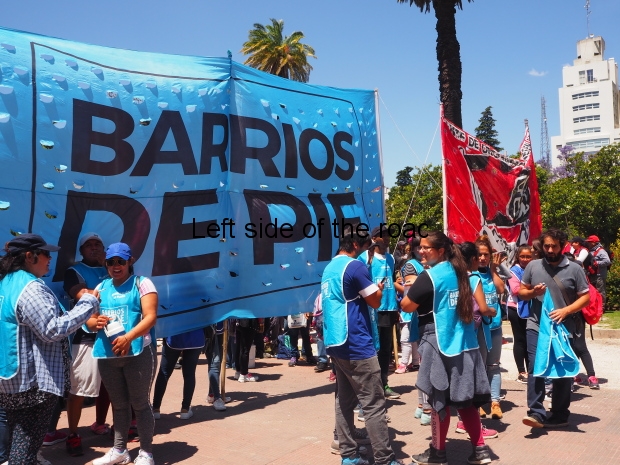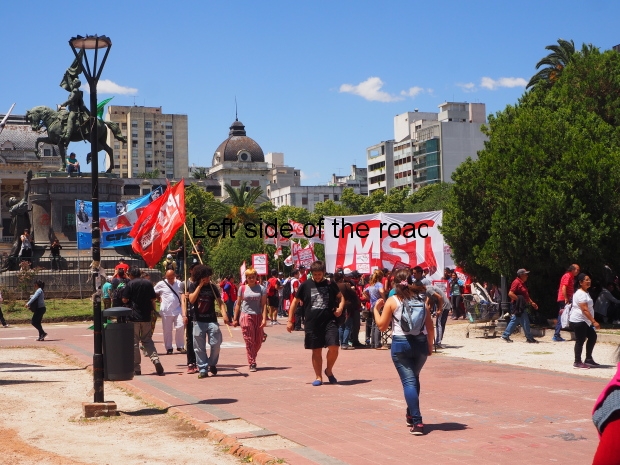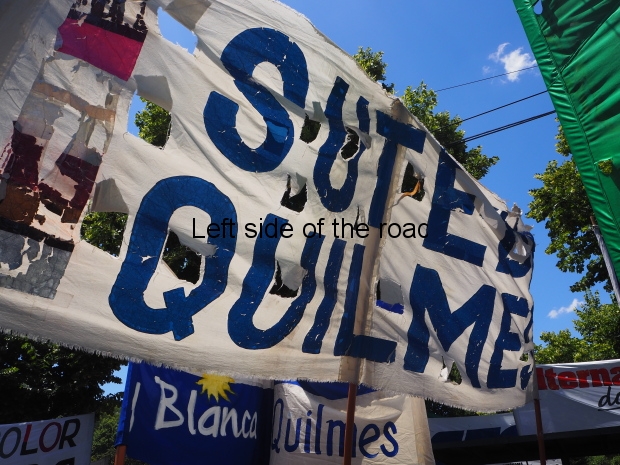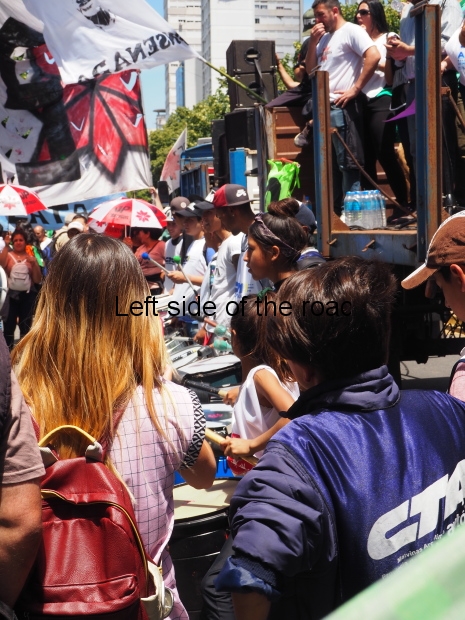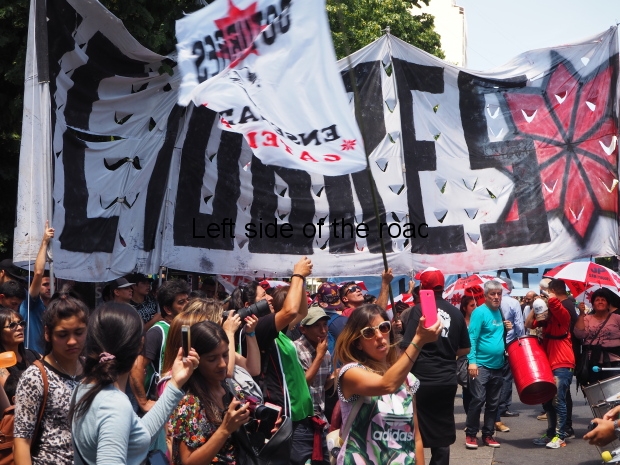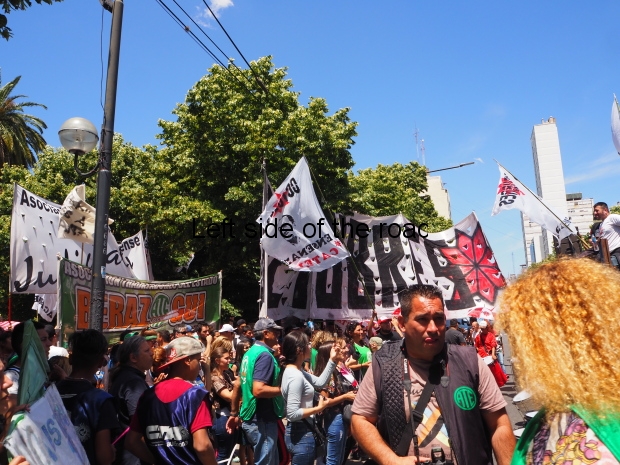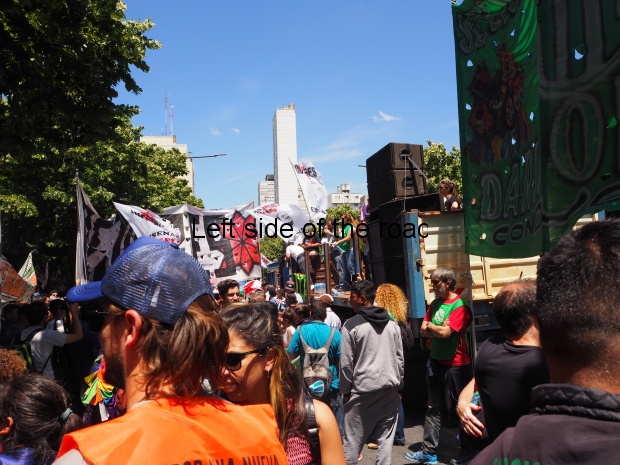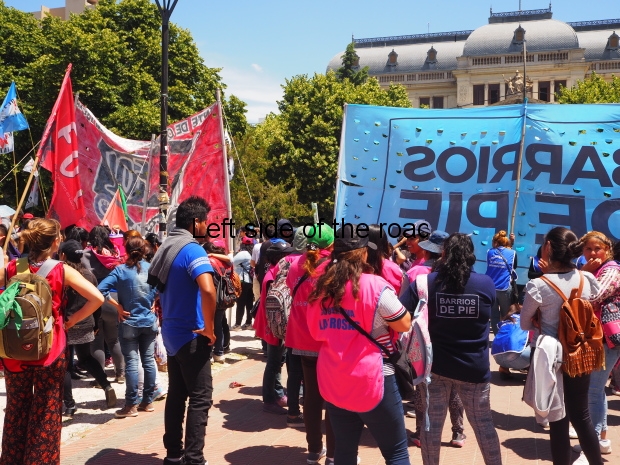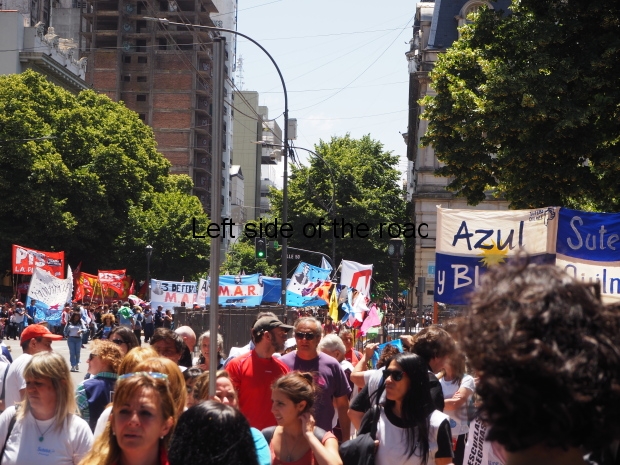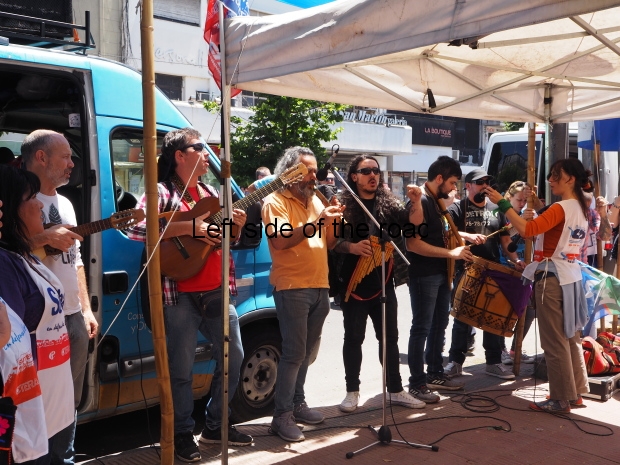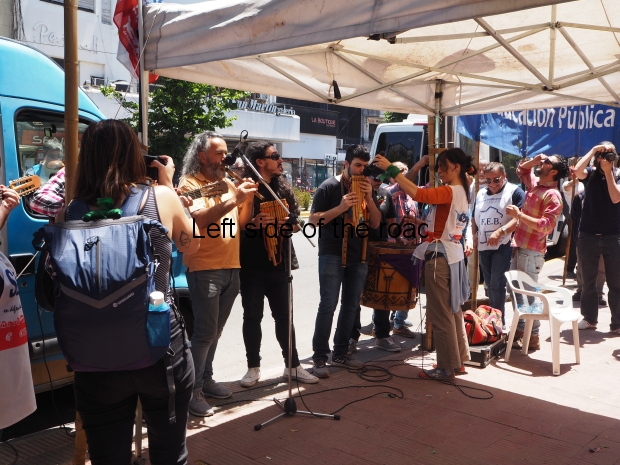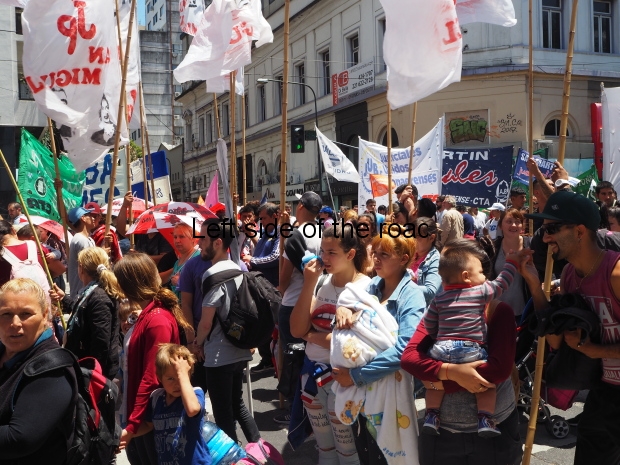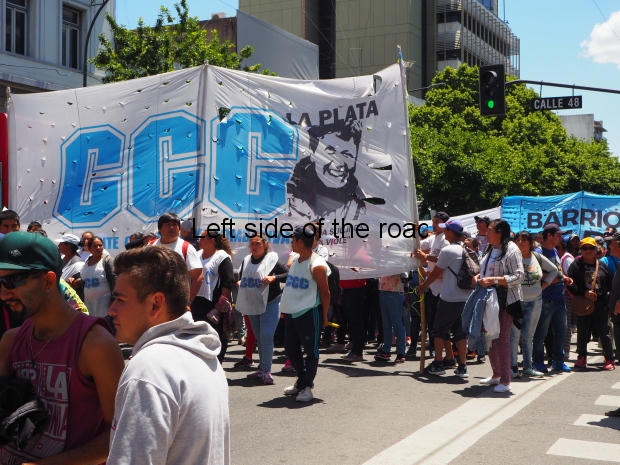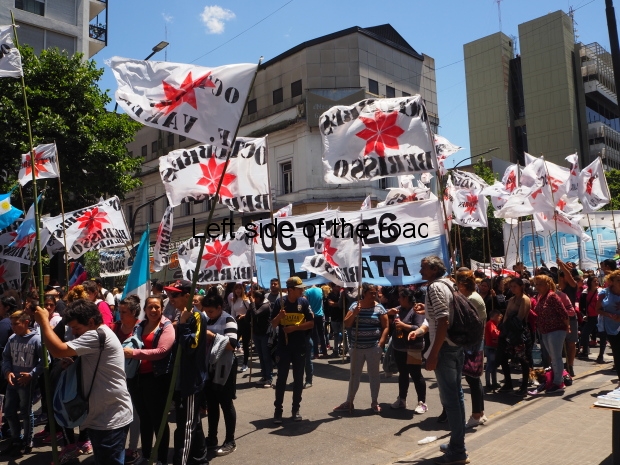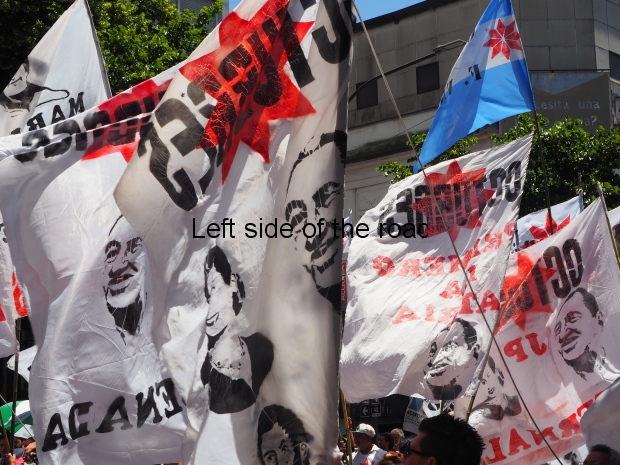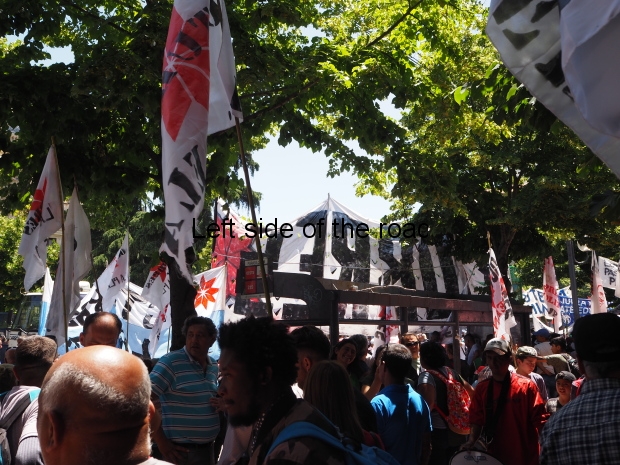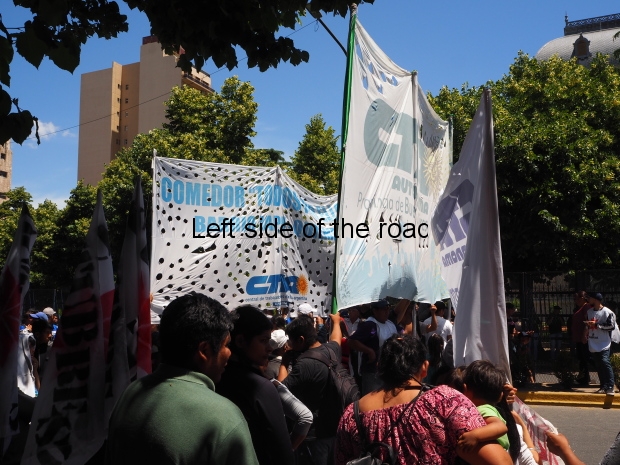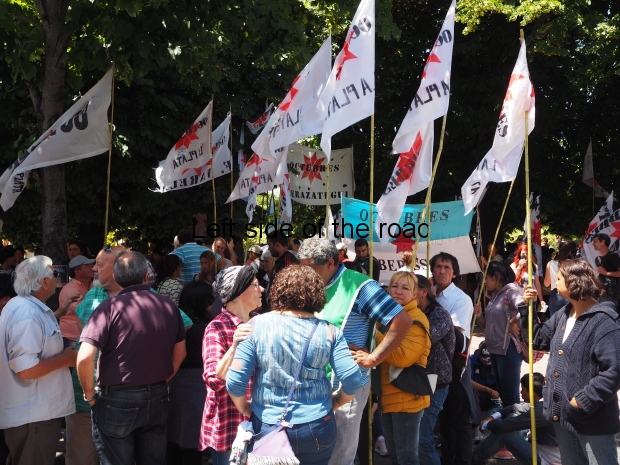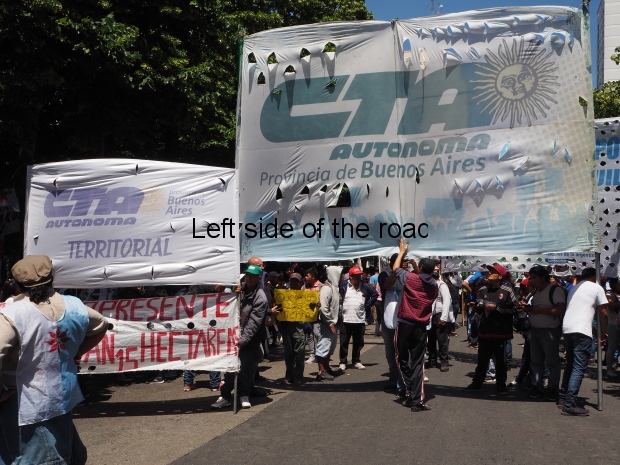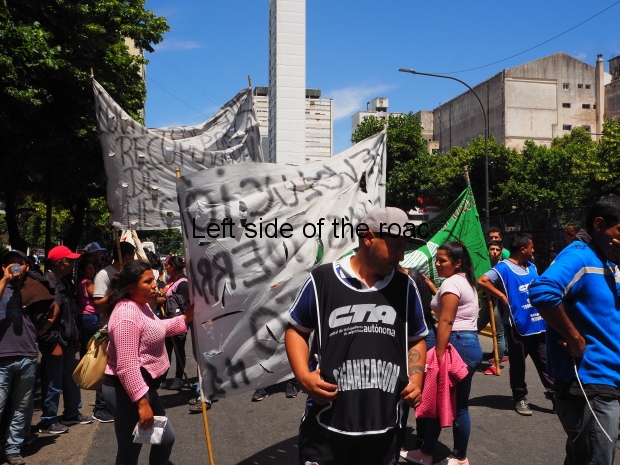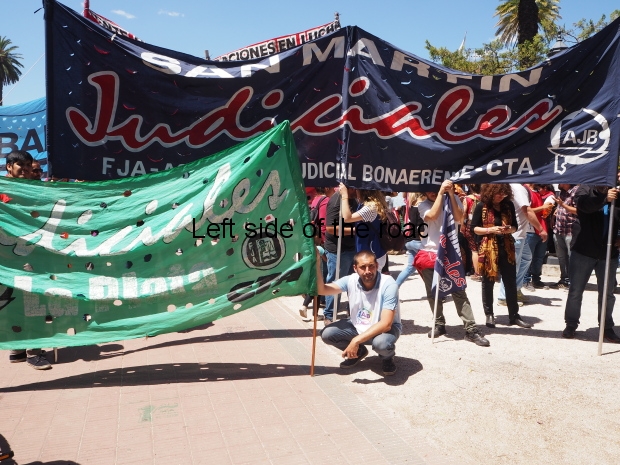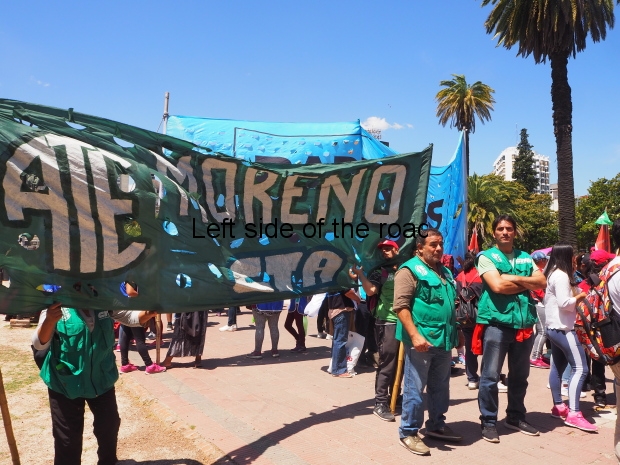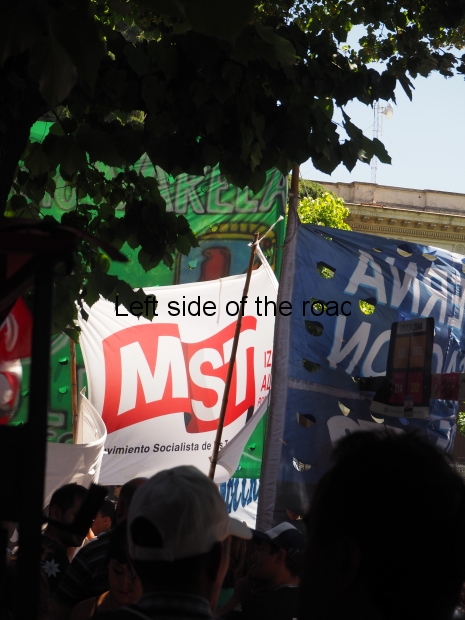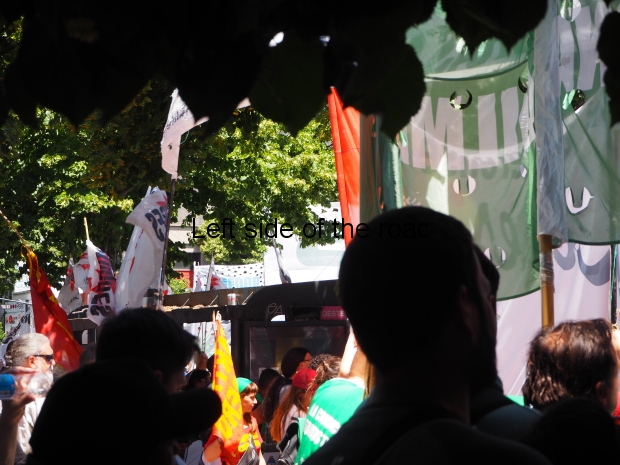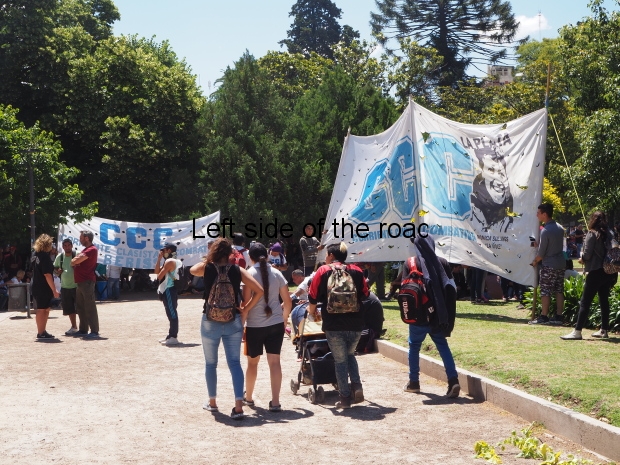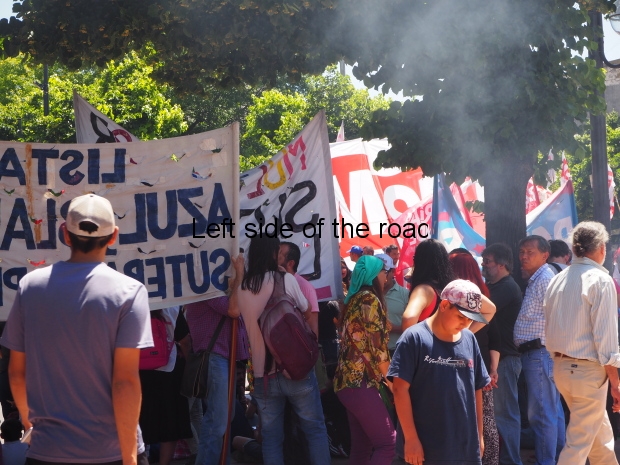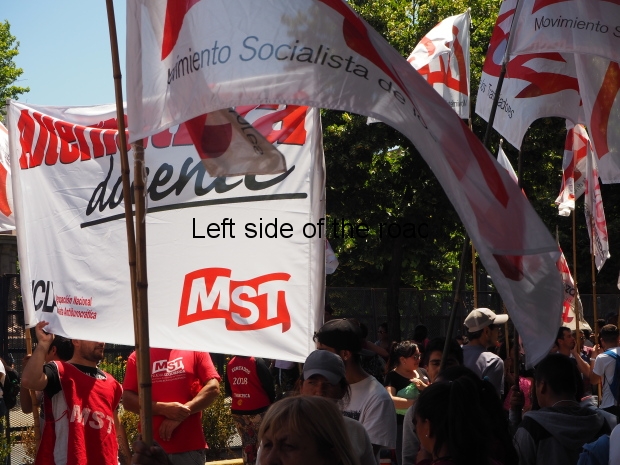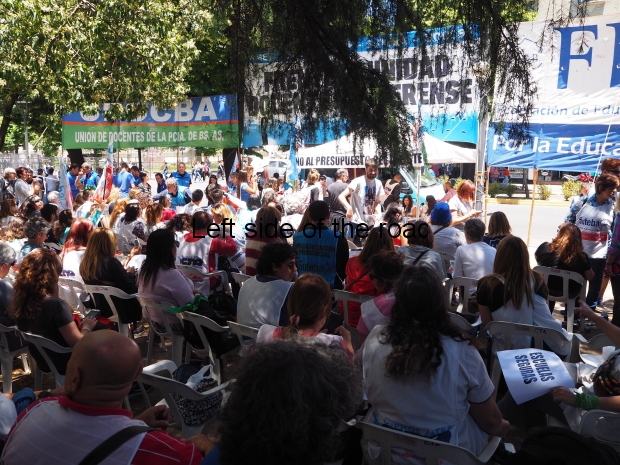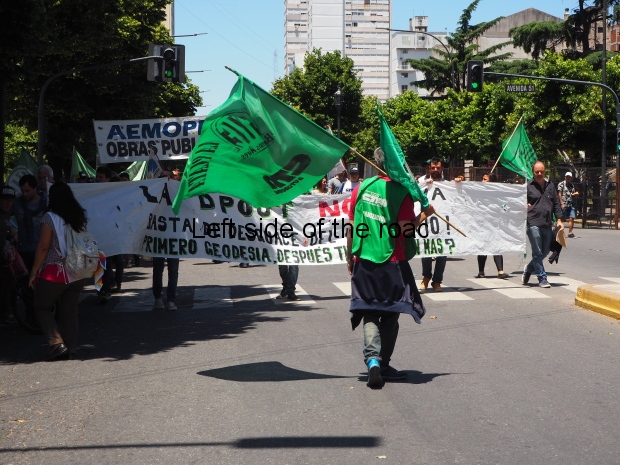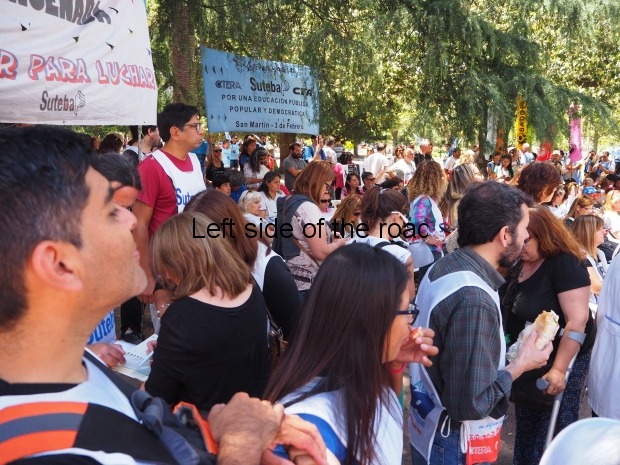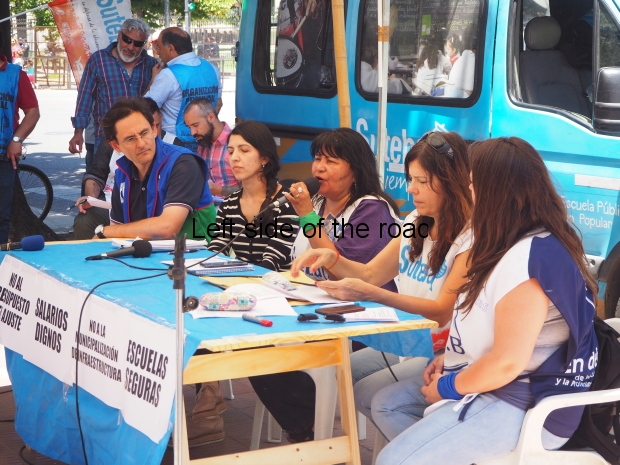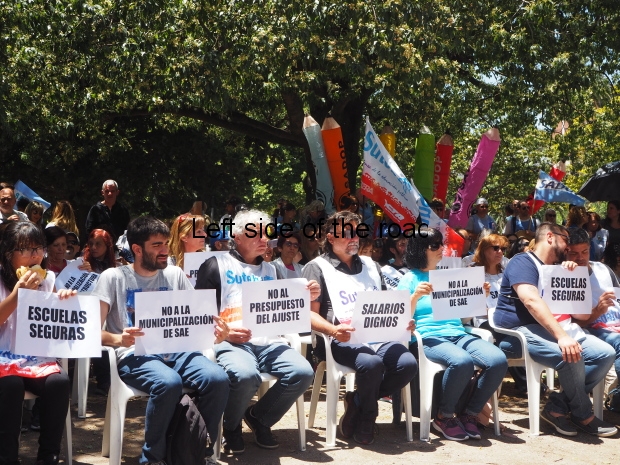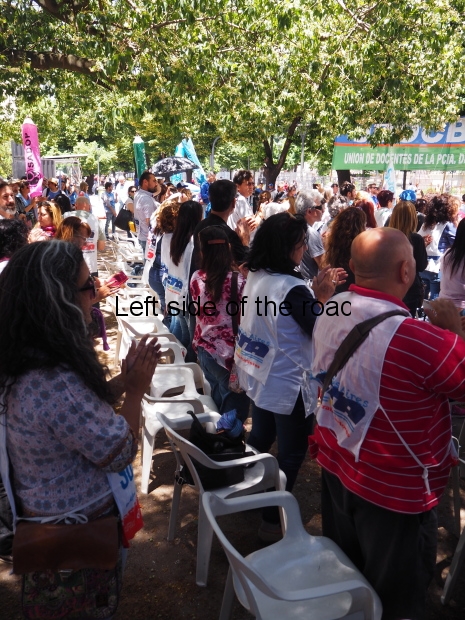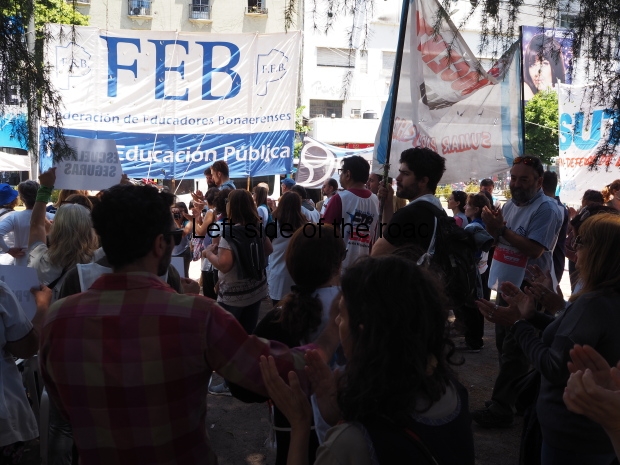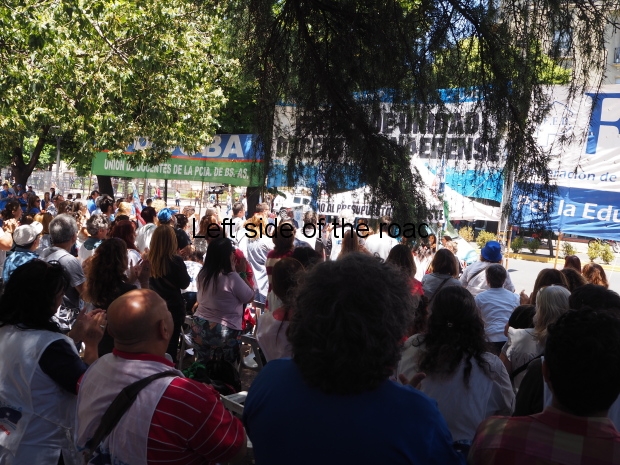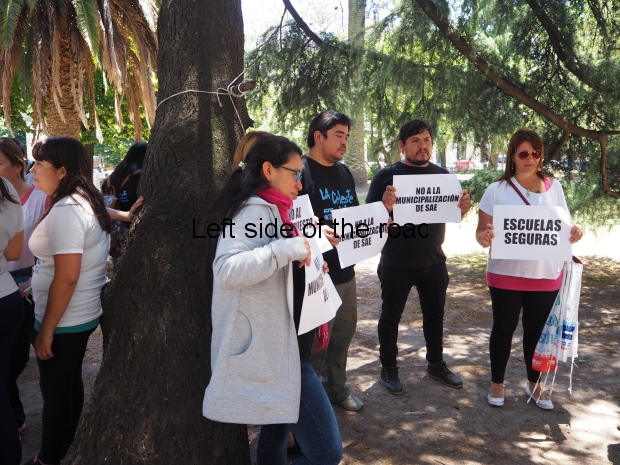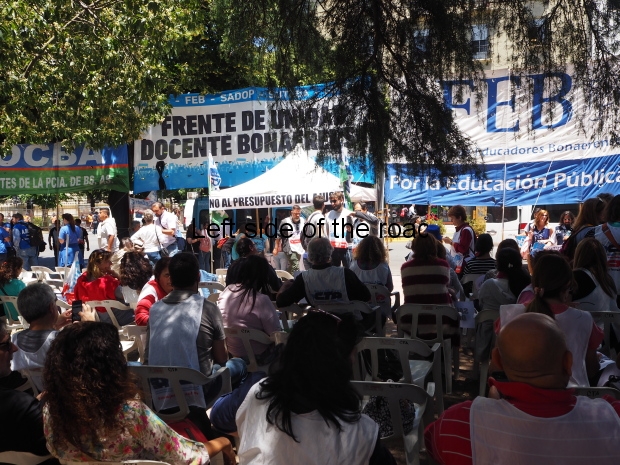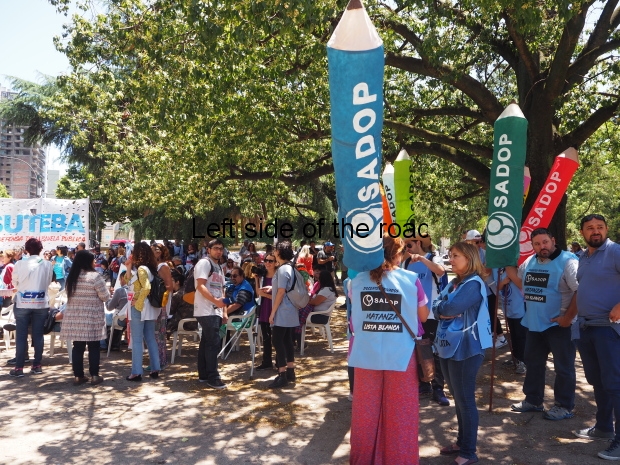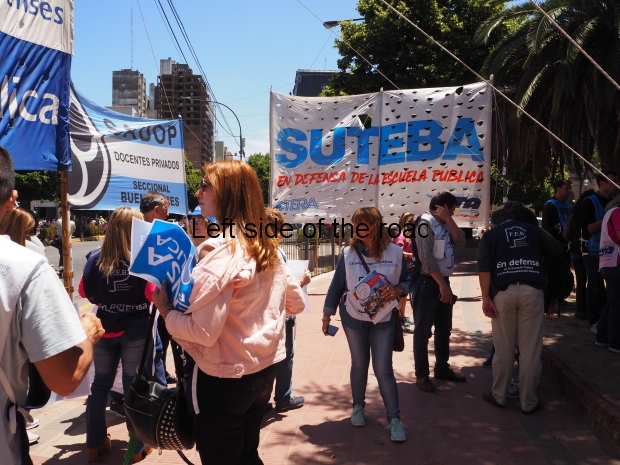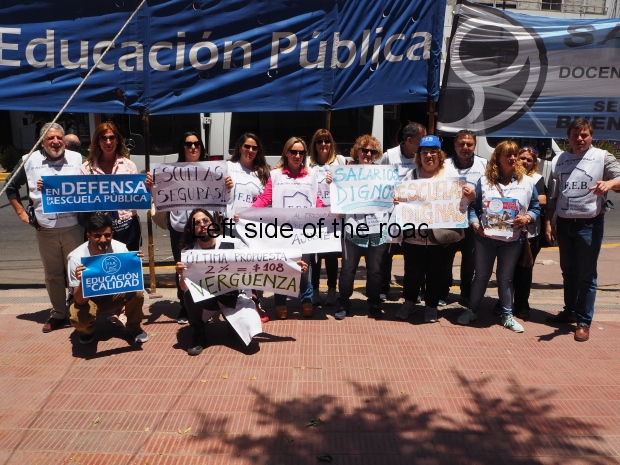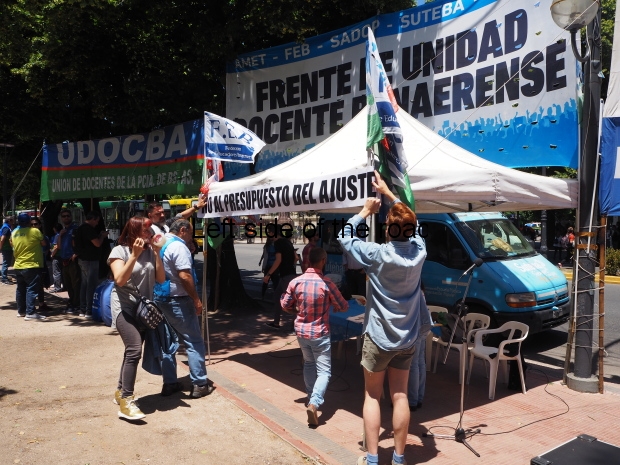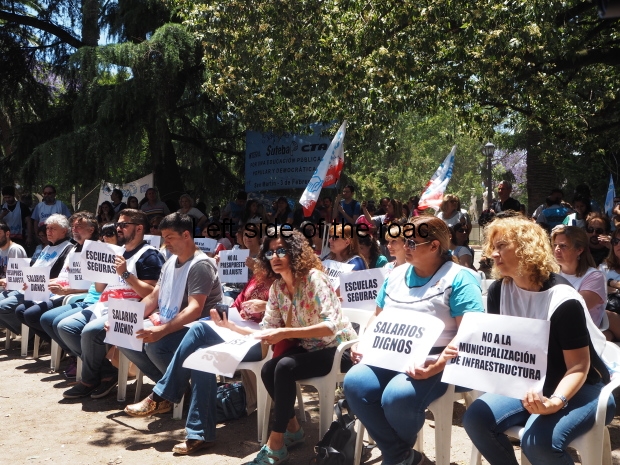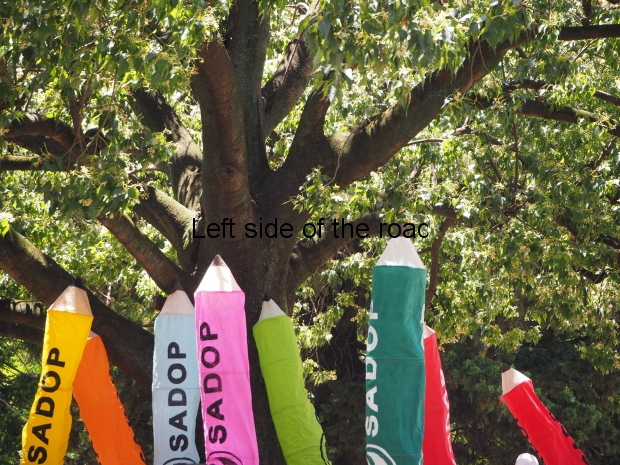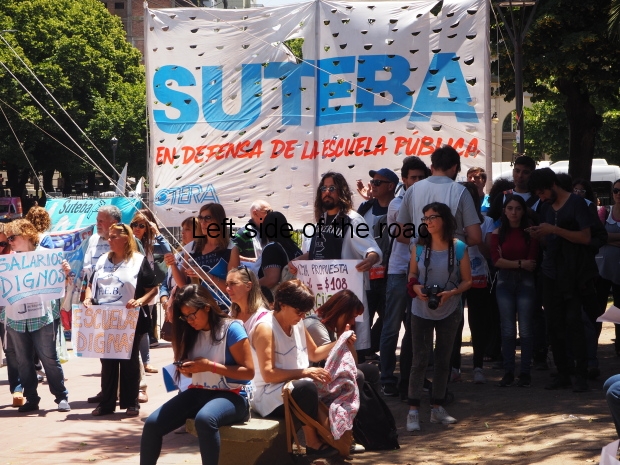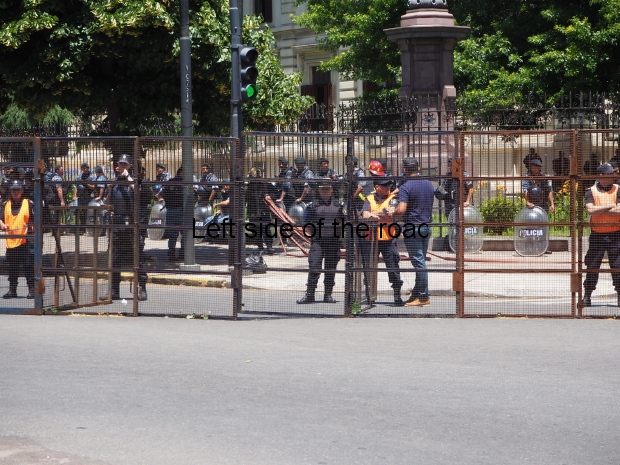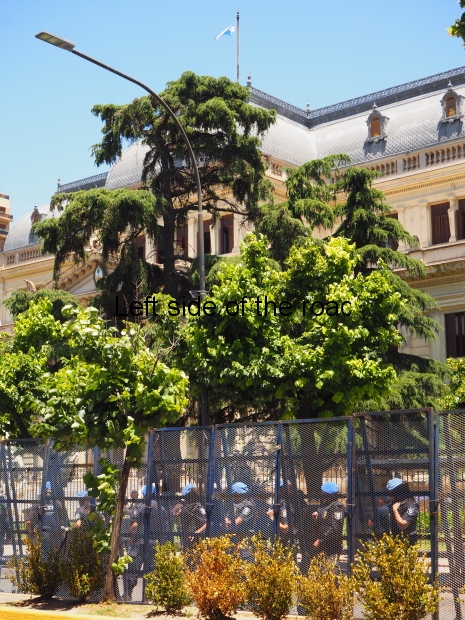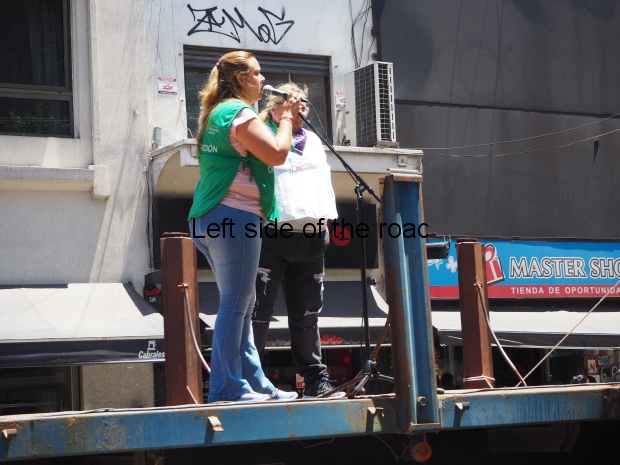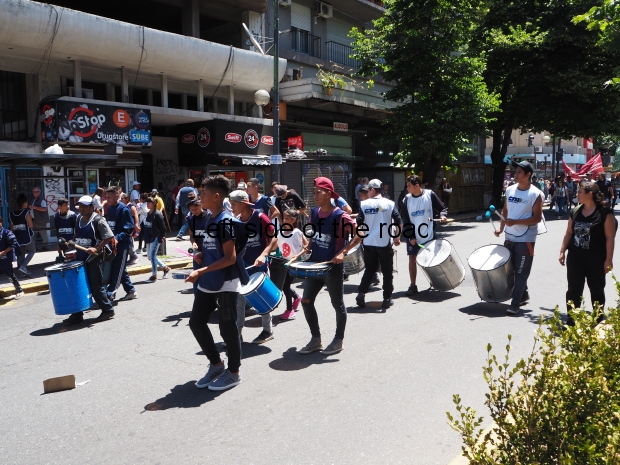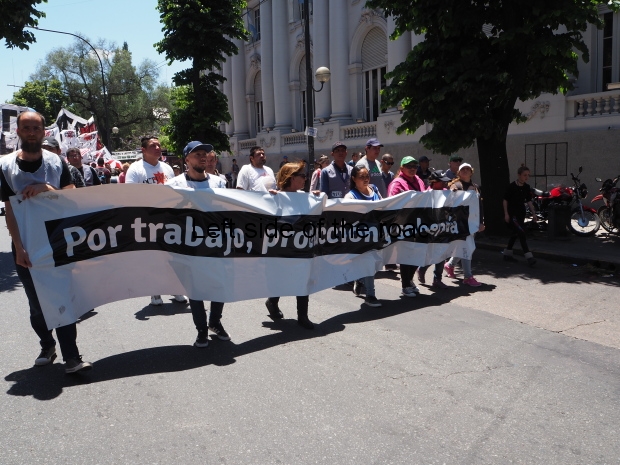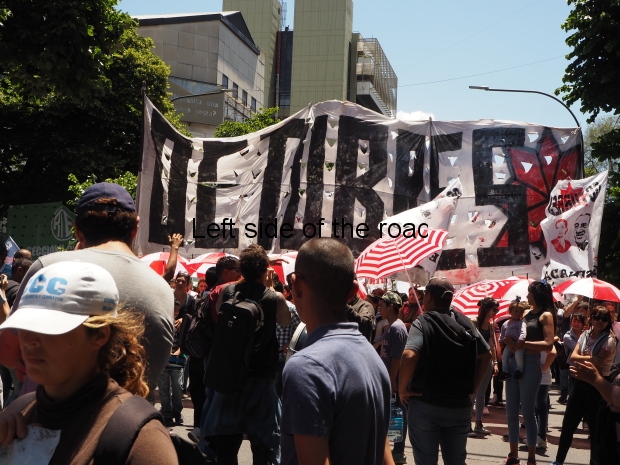
Malvinas Heroes Square – El Calafate
Malvinas Monument El Calafate
El Calafate also has a Malvinas Monument, the one here being situated on the western end of the town’s main street, Avenida del Libertador, just before reaching the town limit. This is in the middle of a large square dedicated to the Heroes of the Malvinas War.
But as with the monument in Rio Gallegos I find it difficult to interpret the image and haven’t been able to get any closer to the intended meaning by speaking with local people.

Malvinas Heroes Square – El Calafate
It’s a simple monument consisting of three black, panel vertical panels (with a small space between them) – with the outline of the Islas Malvinas spreading across the top of all three. The panels are of metal and hollow and the design of the islands has been cut into the front side and with the interior of the panels being painted white the outline is clear under all conditions.
Standing in front of the panel – at about one and half life size – is a statue of a woman made from plaster on a metal frame. Her back is to the panel and she stands with her legs apart facing the main street. When I first saw this statue I thought it was one of the many attempts of Argentina to make some recognition that the country was actually stolen from the indigenous population and although nothing will be given back such statues are considered to be a form of saying sorry – a very cheap way and fundamentally meaningless.

Malvinas Heroes Square – El Calafate
However, I realised my mistake when I actually got to the square. Or then perhaps not. I just can’t understand what this woman has to do with the Malvinas and even less to do with the war of 1982. One explanation I was given was that she is supposed to represent an indigenous woman and there is a conflation of the pain and suffering of the indigenous people and the desire of Argentina to regain sovereignty of the islands.
That would make sense if not for a number of inconsistencies. She’s dressed in a mini-dress (unlike any female clothing I’ve seen of the people who lived in Patagonia before the colonisation of the southern cone in the late 19th century) and for some other inexplicable reason the strap over her right shoulder has been broken or released and this means that her right breast is exposed.

Malvinas Heroes Square – El Calafatel
This might be trying to say that she is some type of Amazon prepared to fight for what should, by rights, belong to Argentina. But that doesn’t make sense from all the historical information I’ve so far been able to pick up. The indigenous weren’t fighters. They were nomadic hunter gatherers. Yet she is depicted with a spear that is about one and half times her own height.
To me she looks more like a young woman who has had a wild Friday night out in the centre of a major British town than anything else.

Malvinas Heroes Square – El Calafate
The other inconsistency is that she is holding, in her left hand – whilst at the same time holding her spear – a very large book. What this book represents I can only surmise. If a book of remembrance this takes us even further away from the indigenous idea. In fact, any book of any kind is totally inconsistent with the period before colonisation as the local people didn’t have a written language (and one of the reasons the indigenous languages are disappearing – or have already disappeared).
As for her stance she has her head thrown back and is looking up to the heavens. That stance, together with her right hand being held high above her head in supplication, seems to indicate that she is begging from an unseen and non-existent God that help is given to obtain the liberation of the Malvinas from foreign, imperialist control.

Malvinas Heroes Square – El Calafate
So there’s a conflict between the images and the message I assume it is trying to convey
Both the woman and the panels are placed on top of a square, brick plinth painted yellow. I think the yellow is to reflect the Sun of May that sits in the centre of the Argentina flag, adding a third national colour to the blue and white. On the face of this plinth, under the feet of the woman and facing the street, are a number of plaques and the photo of an individual soldier. As in the monument in Rio Gallegos these consist of different entities making their support known to the cause being represented by the statue.

Malvinas Heroes Square – El Calafate
The statue of the woman is starting to show signs of lack of maintenance and some of the plaster is starting to separate from the metal framework. The general area is also showing signs of lack of care. This might just be a case that cuts in public expenditure mean that public spaces are being neglected – as in many countries where neo-liberal policies are being enforced in a radical manner and the public infrastructure is being neglected. The state of many public spaces in Argentina would seem to support that point of view.

Malvinas Heroes Square – El Calafate
I saw nothing that indicated the artist or the date of inauguration.
So another Argentinian statue that asks more questions that it provides answers.

Malvinas Heroes Square – El Calafate
The problem the Argentinian state – and people – face is that although there is an overwhelming feeling that ‘Las Malvinas son Argentinas’ they also know that there is no military solution (especially after Galtieri cocked it up in 1982) and although the occupation of the Malvinas on the part of the British costs a fortune (and one of the reasons the British were slowly abandoning the islanders to their own fate in the months leading up to the 1982 war) the British are also hoist by their own petard.
Any British government that were to hand the islands back to Argentina would be condemned as treasonous by a sizeable proportion of the British population and media. So it won’t happen peacefully either.
Such are the games that capitalist nation states play.










